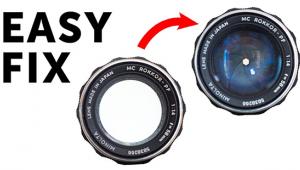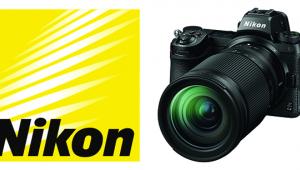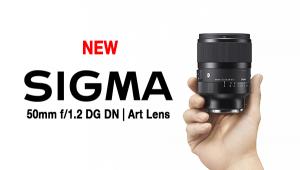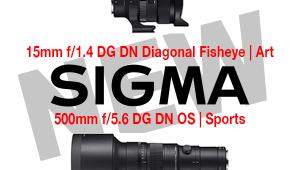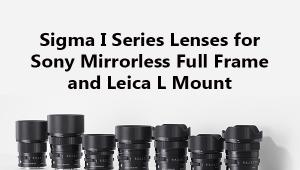Tamron Intros “World’s First” 85mm F/1.8 Lens with Vibration Compensation for Full Frame DSLRs

Tamron announced the new SP 85mm F/1.8 Di VC USD (Model F016) lens this morning, which the company is calling “the world’s first fast aperture telephoto lens with VC (Vibration Compensation).” Tamron’s VC image stabilization technology is designed to make it possible to take handheld photographs in dim light or at night.
The new Tamron 85mm SP lens uses LD (Low Dispersion) and XLD (Extra Low Dispersion) glass elements in the optics, which are designed to minimize color fringing and to help capture sharp and clear image quality with rich color. It’s also designed to capture attractive bokeh that draws attention to the image foreground subject. In addition, Moisture-Resistant Construction has been added to prevent intrusion of moisture, and a durable Fluorine Coating has been applied to the top element surface to prevent condensation and repel smudge-causing substances.
This new lens joins the 35mm F/1.8, 45mm F/1.8 and 90mm Macro in a lineup of SP series prime lenses that has been expanding since 2015. The lens will go on sale in the U.S. starting in April 2016 in Canon and Nikon mounts (the Sony mount to be launched at a later date).
Pricing will be announced shortly, Tamron said.
Here’s rundown of the key specs for the new Tamron SP 85mm F/1.8 Di VC USD lens, from Tamron’s press announcement this morning.
“1. The world’s first 85mm fast-aperture lens with image stabilization
Tamron’s VC image stabilization system enables handheld use in dim light without flash. Camera movement—often too minute to be perceptible to the photographer—is the leading cause of unpleasant photographs. In addition, newer DSLR cameras with higher resolution and higher pixel densities are even more susceptible to subtle camera shake. The VC System, Tamron’s time-proven Vibration Compensation, keeps the sharpness at hand, even in moody, dim light when shutter speeds tend to be longer.2. Superior resolving power and attractive bokeh
Experienced optical design technique combined with LD and XLD lens elements have virtually eliminated on-axis and lateral chromatic aberrations that might otherwise appear as color fringing. In addition, by thoroughly reducing comatic aberrations (distortion of off-axis point source) and astigmatism, subjects that appear as a distinct point source will be captured as a distinct point source even at the edges and corners of the frame. Furthermore, optical simulations were thoroughly conducted, and the 85mm achieves natural bokeh— that dreamy, semi-focus blur that separates the portrait subject from the background with a snap.3. Fluorine Coating and Moisture-Resistant Construction
Fluorine Coating technology developed for use in industrial optics applications has been adapted to photographic lenses. The water and oil repellant coating applied on the front element surface allows safe and easy removal of fingerprints, dirt and smudges. The coating also provides an enhanced level of durability, and will sustain its effectiveness for years. In addition, seals are located at the lens mount area and other critical locations to prevent infiltration of moisture and/or rain drops and provide Moisture-Resistant Construction. This feature provides an additional layer of protection when shooting outdoors under adverse weather conditions.4. Sophisticated eBAND and BBAR coatings plus Advanced Anti-Reflection Technologies
Two highly developed lens coating technologies, eBAND (Extended Bandwidth & Angular-Dependency) which uses nanotechnology, and BBAR (Broad-Band Anti-Reflection), combine to increase light transmission and to reduce flare and ghosting to imperceptible levels. Additional techniques are employed to prevent reflections inside the lens barrel so that the 85mm lens delivers high contrast, sharp and clear images worthy of a fixed focal lens. This lens clearly captures detailed tones even in the shadows.5. Electromagnetic diaphragm system now used also for Nikon-mount lens
An electromagnetic diaphragm system, which has been a standard feature for Canon-mount lenses, is now employed in Nikon-mount lenses. More precise diaphragm and aperture control is possible because the diaphragm blades are driven and controlled by a motor through electronic pulse signals.6. USD actuator maximized for fast and accurate focusing
Fast, quiet AF is achieved by employing a USD (Ultrasonic Silent Drive) ring-type ultrasonic motor which enables remarkably precise focusing drive with high torque and responsiveness. Thanks to the absence of reduction gears in USD, there is no backlash and no unnecessary back-and-forth movement. The control software program for the USD actuator has been revised to provide substantially improved focusing speed and accuracy when using AF. In addition, Full-time Manual Focus override is available at any point during the autofocus operation for deliberately shifting focus without switching the AF-MF. Whether overriding the autofocus or focusing completely manually, the focusing ring turns smoothly and evenly.7. Compatibility with TAMRON TAP-in Console
Always as new as tomorrow: You can update firmware, customize autofocus positions and adjust the mechanical setup and preferences of the 85mm lens by simply attaching it to the TAMRON TAP-in Console and connecting it via USB to a personal computer. (The TAP-in Console is an optional accessory that will be released in March 24.)8. Compatibility with Adobe and Silkypix software
Supplied with SILKYPIX Developer Studio 4.0, advanced editing software that features correction menus for various aberrations (lateral color, distortion, relative illumination) based on the optical design data of this specific lens. In addition, lens profile information has been supplied to Adobe Systems, Inc. to facilitate selecting the precise lens data required for more sophisticated adjustments in RAW processing when using Adobe Photoshop and Lightroom. Shooting RAW image files enables creation of more stringent and high-fidelity image quality.Design Concept
The superior technology inside the Tamron 85mm is matched by advanced external ergonomic features under a design philosophy called “Human Touch.” Improvements include altering the geometric shape and resistance of the AF/MF and VC switches to deliver comfort with secured operational feedback, and enlarging the distance scale window to maximize visibility and legibility. Even the font style has been newly developed to enhance legibility as part of the overall product design.”
- Log in or register to post comments


